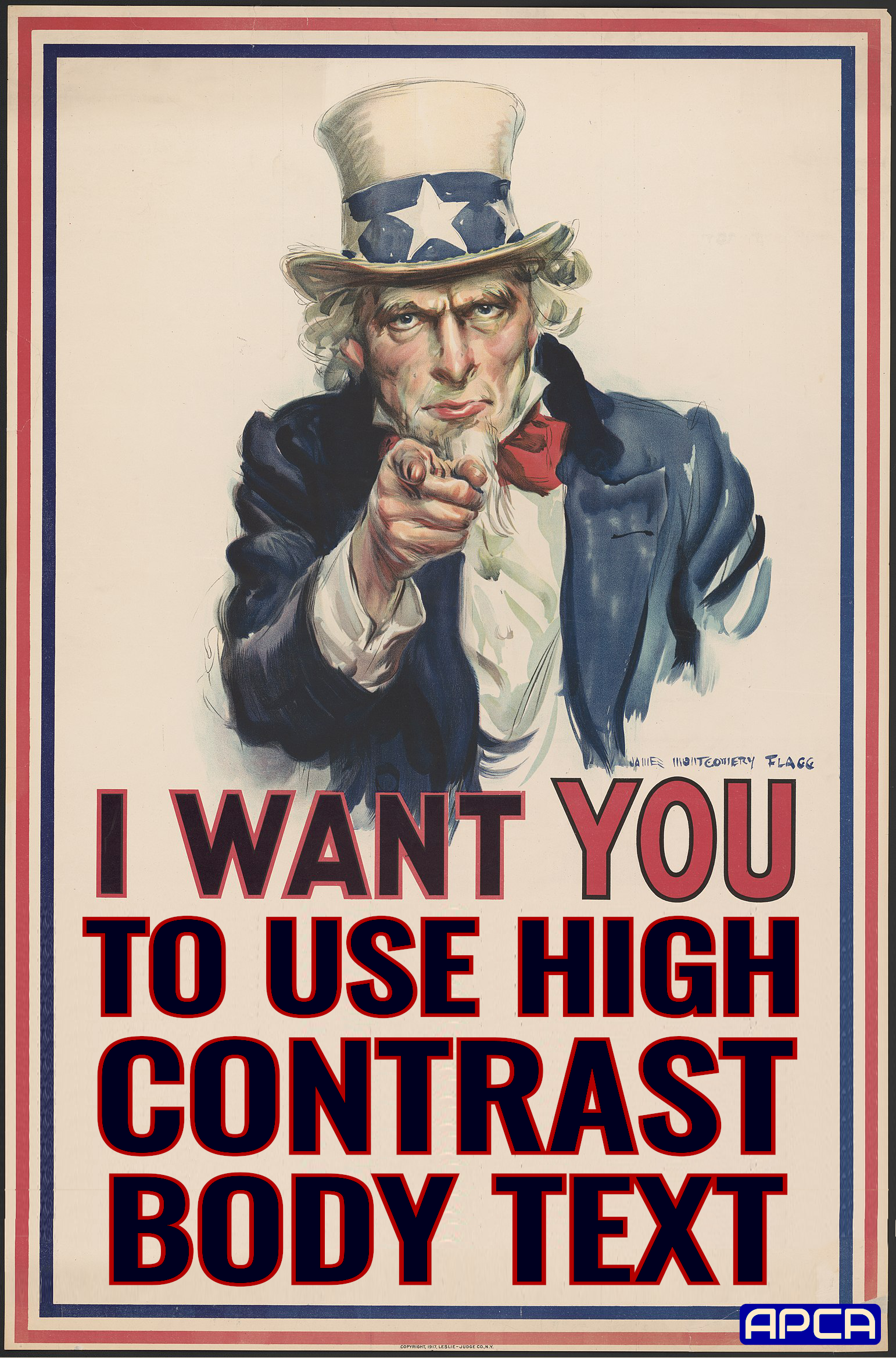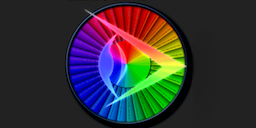A Bridge for WCAG 2 contrast using APCA technology.
NPM Install: npm i bridge-pca
BridgePCA was developed to address some aspersions from a small group of trolls who have been crowing that "oh WCAG 2 is law tho." the truth is that WCAG 2 is not codified as an absolute law in most places (check your region). The reality is actual accessibility is what is legal. APCA and the APCA Readability Criterion promotes actual accessibility while WCAG_2 contrast does not.
BridgePCA maintains backwards compatibility to the flawed WCAG 2 contrast but at the loss of some useful flexibility. It's a way to "force fit" WCAG 2 guidelines into something less harmful. But because WCAG_2 contrast ignores spatial characteristics (such as line thickness) as the primary driver of contrast, Bridge PCA is restricted from relaxing contrast on low-spatial frequency elements, which is specifically needed yet missing in WCAG 2.
For instance, WCAG 2 SC 1.4.11 is not supported by any actual science, only some self-referential cites that arguably have no place in a standards document. 1.4.11 makes some logical leaps and ignores the primary drivers of contrast perception. Moreover, WCAG 2 contrast results can be grossly insufficient, or just barely enough, or much more than needed, all depending on context and use-cases — yetWCAG 2 contrast ignores context and use-cases.
Current Version: 0.1.5 4g (w3) (public beta)
Bridge PCA is a contrast assessment method based on APCA & SAPC technology for predicting the perceived contrast between sRGB colors on a computer monitor. It has been developed as an assessment method to facilitate better readability while maintaining backwards compatibility with WCAG_2 contrast (1.4.3) accessibility standards relating to content for computer displays and mobile devices. The intention is to improve readability and understandability of content.
Current Version: 0.1.5 April 14, 2022
NEW: Improved WCAG 2 ratios.
Bridge-PCS is a "drop n go" replacement for WCAG_2 math, and it's super easy to convert to WCAG_2 ratios. Like APCA, BridgePCA reports results as Lc (Lightness Contrast), and they align like this:
Use the following conversions for AA and AAA:
- Lc 60 exceeds WCAG 3:1
- Lc 75 exceeds WCAG 4.5:1
- Lc 90 exceeds WCAG 7:1
Large Font: 24px (18pt) normal weight or 18.7px (14pt) bold, or larger.
* This is not an official guideline of the AGWG, and was developed indpenedently by Myndex to help cure the readability probelms with web-based content. It is nevertheless fully backwards compatible with the existing WCAG 2 guidelines and provides optional accessibility extensions to improve readability further. It is free for use with web-based content.
In addition, the following enhanced SCs can be added with Bridge-PCA to further improve readability guidance.
SHOULD
- Lc 15 (W 1.3:1) Minimum for disabled elements (not hidden).
- Lc 30 (W 1.8:1) Minimum for incidental text such as placeholders.
- Lc 45 (W 2:1) Minimum for logotypes.
SHALL
- Lc 60 (W 3:1) Large font only, no body text. Non-text okay.
- Lc 75 (W 4.5:1) 16px minimum for body text, 12px minimum otherwise
- Lc 90 (W 7:1) 14px minimum body text, 10px minimum otherwise
MAY
- If the lightest color is darker than the equivalent of #d8d8d8, the minimum Lc value can be reduced by Lc 10, but lowered to no lower Lc 45. Does not apply to thin fonts.
SHOULD
- Lc 30 (W 1.8:1) Minimum for disabled elements (not hidden).
- Lc 45 (W 2:1) Minimum for incidental text such as placeholders.
SHALL
- Lc 60 (W 3:1) Minimum for logotypes and essential non-text.
- Lc 75 (W 4.5:1) Large font only, no body text.
- Lc 90 (W 7:1) 16px minimum for body text, 12px minimum otherwise
MAY
- Lc 90 (W 7:1) Suggested maximum for very large and bold elements.
SHOULD
- Prefer a font with an x-height ratio of 0.56
- Or adjust the minimum font size for fonts with smaller x-height ratios to make up the difference.
- For instance the "large" font x-heights should be
- 13.5px normal (24px font body)
- 10.5px bold (18.7px font body)
- Prefer a font no thinner than 300 weight
- Prefer a font no thicker than 700 weight
In this chart, we see that WCAG_2 contrast degrades losing readability as color pairs get darker, while APCA technology maintains readability across the visual range.
Unlike the main APCA, BridgePCA is all about "emulating" WCAG_2 contrast. So, BridgePCA is a like-for-like replacement of the quirky WCAG_2 contrast math.
Like APCA, BridgePCA reports results as Lc (Lightness Contrast). Conversion to WCAG_2 ratios:
- Lc 60 exceeds WCAG 3:1
- Lc 75 exceeds WCAG 4.5:1
- Lc 90 exceeds WCAG 7:1
DIFFERENCES: for best results, send the text color to the text input of the tool. Bridge PCA is "polarity sensitive," even though WCAG_2 is not. For light text on a dark background, the result will have an R for "reverse" after the LC value. N means "normal".
No Free Lunch: while BridgePCA corrects the many false passes and improves readability, the cost is that there is reduced design flexibility due to the fact that to maintain backwards compatibility, some contrasts are forced higher than they actually need be.
BridgePCA has some minor internal adjustments to align with some of the more incorrect aspects of WCAG_2 contrast math. In order to be backwards compatible, BridgePCA will not forgive the false-fails of WCAG_2, but BridgePCA will correct the many false passes which vastly improves readability.
But if you need a standards compliant method that also improves readability this is it. If on the other hand you do not need to abide by the letter of any particular standard, you may want to consider the more flexible full APCA solution.
import { APCAcontrast, sRGBtoY, displayP3toY, colorParsley } from 'bridge-pca';Send rgba int array to sRGBtoY(), use the new colorParsley() if you need to parse a string first.
First color must be text, second color must be the background.
let textColor = [17,17,17,255];
let backgroundColor = [232,230,221,255];
let txtY = sRGBtoY( TEXTcolor );
let bgY = sRGBtoY( BACKGNDcolor );
z
let contrastLc = BPCAcontrast( txtY, bgY );
let wcag2ratio = bridgeRatio( contrastLc, txtY, bgY );If you need to parse, we've kept that, now called "colorParsley()" send it anything, it returns an rgba array. HSL is not implemented. Relative to the above example:
let textColor = colorParsley('#111111');
let backgroundColor = colorParsley('e8e6dd');The following are the available input types for colorParsley(), HSL is not implemented at the moment. All are automatically recognized:
-
No Alpha
'#abc'or'abc'(interpreted as'aabbcc')'#abcdef'or'abcdef'(hash is ignored)'rgb(123, 45, 67)''aquamarine'or'magenta'(full CSS4 named colors list)
-
With Alpha (alpha is not presently calculated, and is assumed as fully opaque)
'#abcf'or'abcf'(interpreted as'aabbccff')'#123456ff'or'123456ff'(hash is ignored)'rgba(123, 45, 67,1.0)'
- As hex
0xabcdef
- As integer
11259375
No alpha parsing for numbers in part as there are big and little endian issues that need to be resolved.
colorParsley() is now a separate package, and an optional dependency if you need parsing of strings.
Additional documentation, including a plain language walkthrough, LaTeX math, and more are available at the SAPC repo.
These constants are for use with the web standard sRGB colorspace.
// 0.98G-4g-W3 constants (W3 license only):
Exponents = { mainTRC: 2.4, normBG: 0.56, normTXT: 0.57, revTXT: 0.62, revBG: 0.65, };
ColorSpace = { sRco: 0.2126729, sGco: 0.7151522, sBco: 0.0721750, };
Clamps = { blkThrs: 0.022, blkClmp: 1.414, loClip: 0.1, deltaYmin: 0.0005, };
Scalers = { scaleBoW: 1.14, loBoWoffset: 0.027,
scaleWoB: 1.14, loWoBoffset: 0.027,
bridgeWoBfact: 0.1414,
bridgeWoBpivot: 0.84, };
// NEW for 0.1.5 for the bridgeRatio function
const hiTrim = 0.0785;
const loTrim = 0.0815;
const trimThresh = 0.506;There's a working version with examples and reference material on the BPCA site





